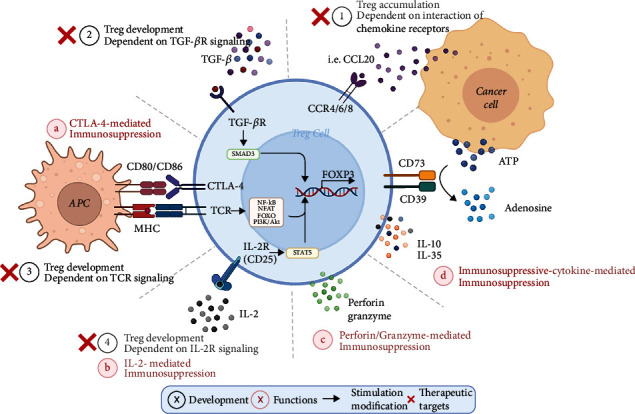Figure 1.

Prime mechanisms of Treg-mediated immunosuppression and associated therapeutic targets in NSCLC. Black: in the tumor microenvironment (TME), the development of regulatory T cells (Tregs) depends on several main factors that contribute to the FOXP3 expression: (1) the interaction of chemokine receptors, (2) TGF-βR signaling between Treg and cancer cells, (3) TCR, and (4) IL-2R signaling in Tregs. Red: Tregs express the high-affinity IL-2 receptor binding to and sequestering IL-2 to reduce its availability to effector T cells. They also express cytotoxic T lymphocyte antigen 4 (CTLA-4), which binds to CD80 and CD86, with a higher affinity than CD28, on antigen-presenting cells (APCs), thereby transmitting suppressive signals to these cells. In addition, Tregs can produce immunosuppressive cytokines, granzymes, and perforin to inhibit immunity. Red cross: different therapeutic approaches have been explored in downregulating Treg cell expansion mediated by chemokine or TGF-β in the TME. In addition, inhibitors targeting TCR and IL-2R signaling have been tested in reducing Treg cell activation and proliferation in patients.
